A detailed guide to growing early cucumbers in a home greenhouse.
| Content:
|
Cucumbers are now more often grown in open ground than in protected ground, even in the middle zone.
|
In greenhouses, crops are planted to obtain an early or late harvest, when the season in open ground has not yet begun or has already ended. |
Varieties of cucumbers for greenhouses
Parthenocarpic varieties are suitable for greenhouses. They set greens without pollination. No bees or wind are required to form a crop.
Growing self-pollinating and bee-pollinating plants in protected soil is difficult. There are not enough insects and wind in the greenhouse, so pollination of such varieties often does not occur. In a cucumber, each flower lives for 5 days, and if pollination does not occur, it falls off. However, if favorable conditions are created, both varieties can be grown in a greenhouse.
The best option for greenhouses are hybrids. Most of them are parthenocarpics, while the varieties are mainly bee-pollinated plants. The taste of hybrids is not inferior, and, most often, even superior to varieties.
- Long-climbing cucumbers with medium and strong branching are grown in protected ground.
- Long-climbing varieties with weak branching are also suitable for closed ground.
- Bush cucumbers are not suitable for greenhouses.
When choosing a variety, always read the information on the package. If you grow cucumbers intended for planting in open ground in a greenhouse, then it will be too hot and too humid for them, which will ultimately lead to loss of harvest.
Several varieties can be planted in one greenhouse. It is important that the method of setting fruit is the same. Parthenocarpics should not be planted next to bee-pollinated and self-pollinated cucumbers.As a result, cross-pollination can occur and the greens will turn out ugly, twisted, bent and small.
Preparing the soil for cucumbers
Cucumbers need fertile, humus-rich, water- and breathable soil with a slightly acidic or close to neutral reaction (pH 5.5-6.5).
The culture loves fresh manure. To increase soil fertility, it is applied in the fall: per 1 m2 4-5 buckets of cow or horse manure. Bird droppings are the most concentrated, so less is required: 2-3 buckets per m2. Pig manure is not suitable for cucumbers. Over the winter, the manure will rot, enriching the soil with nutrients and significantly increasing its fertility.
If it is not possible to apply manure in the fall, it is applied in the spring, but in a semi-rotted form. To grow early cucumbers in a greenhouse in the spring, a warm bed is prepared. To prepare it, use either manure or compost.
- For cooking manure bed fresh or semi-rotted cow or horse manure is taken. You can use bird droppings, but take 2 times less of it. In the garden bed, dig a trench 20-25 cm deep, add manure into it and cover it with earth. The bed is watered abundantly. Manure, when decomposing, releases a large amount of heat. It both warms the garden bed and acts as a fertilizer for cucumbers. You can plant crops in such a bed at the earliest possible time. In the middle zone, the crop is sown in the second ten days of April.
- Compost beds. Since there is nowhere to get fresh plant residues in early spring, they use potato peelings, banana skins, rotted sawdust, and food scraps. To speed up decomposition, biodestructors are added to the residues, accelerating the process of compost maturation: Embiko Compost, Stubble.The heat generated in compost beds is less intense, so cucumbers are planted 2 weeks later. Apply compost in the same way as manure.
- In the absence of both manure and compost, the soil is amended mineral fertilizers. This is the worst option, but... At 1 m2 add urea 30-40 g, superphosphate 70-90 g, potassium sulfate or potassium magnesia 40-50 g. Phosphorus and potassium fertilizers can be replaced with ash: 2 cups/m2. Nitrogen fertilizers are indispensable for cucumbers and must be applied. After adding mineral water during early sowing, the soil is warmed up.
Warming up the soil carried out early in the spring. This technique allows you to sow seeds 10-14 days earlier. For ultra-early sowing in the middle zone, the soil is warmed up on the 20th of April. In the south, this event can be held 2 weeks earlier.
The earth is poured with boiling water so that it is soaked by at least 20 cm, and covered with black film or sheets of iron. Leave for 2-3 days, then repeat the procedure again. In cloudy, cold weather, the soil is treated 3 times. After such intensive processing, the soil warms up to 18-20°C and is suitable for sowing cucumbers.
How to prepare seeds for sowing
Hybrids and varietal seeds are prepared in different ways.
- Varietal seeds are heated 30 days before sowing to enhance the formation of female flowers. Bags of seeds are hung on the radiator. You can keep the seeds in a thermos with hot water (55°C) a few days before sowing. On the main stem of the varieties, mainly male flowers are formed, the so-called barren flowers. There are male and female flowers on the side shoots. For one female flower, the varieties have 4-5 male ones. Fresh seeds form particularly strong barren flowers.After warming up, the number of female flowers in the varieties increases, although there are enough barren flowers.
- There is no need to warm up the hybrids, since they have a female type of flowering and practically no male flowers. They are kept for 15-20 minutes in a warm, slightly pink solution of potassium permanganate. As a rule, the bag says that the seeds have been processed. But the period of protective action of fungicides is 1.5-2 months. By the time of landing, the protective effect is reduced to zero.
Both varieties and hybrids are calibrated before sowing. They are poured into a glass and filled with water at room temperature. The floating seeds are unsuitable for sowing and are discarded. 2-3 year old seed material has the highest germination rate.
Sowing seeds in a greenhouse
Planting cucumbers in a greenhouse is carried out 3-5 days after adding organic matter, or warming the soil to at least 18°C when filling it with mineral fertilizers. The air temperature in the greenhouse should be at least 18°C, but better 22-25°C during the day and 18°C at night.
Direct sowing into the ground
It is better to grow cucumbers from seeds in any conditions. Seedlings bloom and begin to bear fruit earlier, but as a result, their yield is 2 times lower than that of plants grown by direct sowing in the ground.
- Cucumbers are planted in manure beds using the strip method. A furrow is made over the trench in which manure or compost is embedded and seeds are sown in 2-3 pieces. after 25-30 cm. (After germination, the strongest plant is left, and the rest are carefully cut off with scissors.) The furrow is covered with 2 cm of earth, watered with warm, settled water. If it is cold outside, then the crops can be covered with film. But keep in mind that manure and compost generate a large amount of heat. If the temperature is above 36°C, the cucumbers will not sprout.Cucumbers are planted in a manure bed in the first ten days of April, and in a compost bed by the end of the month.
- In beds filled with mineral fertilizers, planting is carried out using the nesting method. The distance between nests is 35-40 cm, between seeds in one nest - 3-4 cm. The crops are covered with earth and must be covered with film, since the crops may be cold in such a bed. Planting in beds without heating is carried out in early to mid-May.
Growing through seedlings
For extra early boarding cucumbers are grown from seedlings. This method has more disadvantages than advantages:
- seedlings are difficult to take root, there are a lot of attacks;
- plant growth is noticeably slower than that of specimens grown during soil sowing;
- plants grown by direct sowing of seeds into the ground quickly overtake seedlings planted in a greenhouse at the same time;
- Although seedling plants bloom earlier, their yield is significantly lower in the end.
Seedlings are planted only by transshipment, without damaging the roots. If the root system is even slightly damaged, the plant will most likely die. When planted directly in peat pots, when the roots are not damaged, the plants will take a long time to acclimatize and will still lag behind in growth compared to ground specimens. The roots of cucumbers are weak and will take a long time to grow through the peat wall.
Seedlings are planted in a greenhouse at the age of 15-20 days by transshipment or by burying peat pots in the soil. If the seedlings are very elongated, then the stem is laid around the circumference of the pot and covered with 2 cm of soil. Cucumbers produce adventitious roots very well and the plant will not be weak and frail.
Seedlings are planted in a row, the distance between plants is 25-30 cm.When planting, cucumbers are buried 1-2 cm into the soil - this stimulates the formation of adventitious roots. The planted plants are watered abundantly with warm, settled water. You can’t water with cold water; the seedlings may die. At night, the culture is additionally covered with film or lutarsil. If the weather is cold, then the covering material is not removed during the day.
The main thing when growing cucumbers through seedlings is that they take root. Therefore, immediately after planting, cucumbers are sprayed with a root formation stimulator: Kornevin or Heteroauxin. After 3-5 days, root fertilizing is done with the same preparation.
Caring for cucumbers in a greenhouse
In a manure bed, seeds germinate in 2-3 days, in a compost bed - in 5-6 days, in a regular bed - in 8-10 days. Seedlings take root long and difficult in any type of bed.
Temperature
After the shoots emerge, the film is removed. The difference between day and night temperatures should be 6-7°C. If the nights are cold, then the seedlings are covered with film or lutarsil.
The temperature in the greenhouse is controlled by ventilation and covering material.
- At night the thermometer should be at least 18°C
- In cloudy weather 20-24°С
- On sunny days no more than 34°C.
- When the air in the greenhouse is very hot, cucumbers stretch out, and in bee-pollinated varieties, the pollen becomes sterile.
- If cucumbers are cold, their growth is inhibited.
With prolonged cold weather and the absence of warm beds in the greenhouse, irreversible changes occur in the crop and in the future one cannot count on a harvest.
Ventilation is carried out daily. In cold weather in the morning, since cucumbers release a large amount of water at night, condensation forms on the walls of the greenhouse. In warm weather, ventilate throughout the day, closing the greenhouse only at night.On hot days the doors are left open 24 hours a day. Open the greenhouse even on cloudy, cold days to avoid high humidity when growing cucumbers.
Soil care
The main requirement of cucumbers is that there is no grass near or around them during the growing period. The roots of the crop are very vulnerable and are easily damaged when weeding. It is enough to damage the sucking roots, and they immediately die and are no longer formed on this root. The plant must grow a new root with sucking hairs.
When planting cucumbers early in a greenhouse, as a rule, they do not wait for weeds to emerge. Therefore, if it so happens that they have sprouted along with the cucumbers (and they will definitely appear), then they are cut off with scissors, but not pulled out. This is done throughout the entire cucumber growing season.
The soil around the plants is not loosened. If, when watering, water is slowly absorbed by the soil, this means that it is heavily compacted. Then, for a normal supply of oxygen to the roots, punctures are made between the cucumbers with a pitchfork in the soil to the depth of the tines, just as they are made in the lawn. At 1 m2 make 5-6 punctures without turning the fork or picking up the ground. This technique allows you to loosen the soil quite effectively without damaging the delicate root system of cucumbers.
Air humidity
When growing cucumbers in a greenhouse, at first the air humidity should be 75-85%. With higher humidity, plants are severely affected by rot, and with lower humidity, growth slows down. Cucumbers in a greenhouse evaporate water intensively, so humidity is regulated by ventilation.
When there are 5-6 true leaves on the vines, the air humidity is increased to 90%. This allows the ovaries to form normally. At low humidity, the greens will be small and not juicy.To maintain high humidity on hot days, the paths are sprayed.
Watering
Water the crop exclusively with warm water. The use of cold water leads to an almost complete cessation of its absorption by the roots, and, despite the fact that the plants have been watered, they experience a moisture deficiency. A typical reaction of cucumbers to cold water is a sharp decrease or even cessation of fruiting and shedding of ovaries.
Water the cucumbers in the morning. When watering in the evening, the plants, having absorbed moisture overnight, evaporate it very much early in the morning. In the greenhouse, strong condensation forms on the walls and, most importantly, on the leaves, the humidity becomes close to 100%, which is bad for the crop. In addition, losing a lot of moisture, the plants grow worse, and in the morning they need abundant watering, despite the fact that they were watered in the evening.
At temperatures above 25°C, watering is carried out daily, even if the soil is wet. In cooler weather, watering is carried out once every 2-3 days. Greenhouse cucumbers do not tolerate drying out of the soil; they immediately begin to shed their ovaries.
The rate of watering varies depending on the phase of development.
- Before flowering 1 m2 a greenhouse uses 5 liters of water
- During the flowering period - 8-10 l
- During fruiting 15-18 liters.
Greenhouse shading
This is a must when growing early cucumbers. The culture needs shading from the bright spring sun. In the summer, if no shadow falls on the greenhouse for at least 8 hours during daylight hours, the plants are shaded. Cucumbers are native to the rainforests of India and prefer indirect light rather than direct sun.
For shading, the outside of the greenhouse is sprayed or painted with a chalk solution. The blue-green mosquito net shades the greenhouse well and, at the same time, allows a sufficient amount of light to pass through. It covers the roof of the greenhouse.
Top dressing
Cucumbers are extremely demanding when it comes to feeding. Without them there will be no harvest. Feeding is carried out once every 10 days. For abundant fruiting, cucumbers require a lot of organic matter. If it is, then it can do without the use of mineral fertilizers. If not, then, as a last resort, humates are used, but there should be at least 3 organic fertilizers per season. If there is both, then organics are alternated with mineral water.
When the first true leaves appear on the cucumbers or 7 days after planting the seedlings, the first feeding is done. Take an infusion of fresh manure 1:10 or bird droppings 1:20 and water the cucumbers. If there is no manure, then use weed infusion 1:5.
For the next feeding, take potassium humate and any microfertilizer (cucumber Kristalon, Uniflor-Micro). You can use ash instead of microfertilizer. 2 tbsp. The ash is scattered around the plant after watering, or the cucumbers are watered with an infusion of ash.
Starting from the flowering phase, fertilizing is carried out once a week. In addition to root feeding, 2-3 foliar feedings are done during the growing period of cucumbers. For them, it is better to use humates or liquid microfertilizers (Intermag-Ogorod, Malyshok). The first time foliar feeding is done at the beginning of fruiting. The second spraying is 10-12 days after the first.
When fruiting begins to decline, the dose of nitrogen fertilizers is increased by 1.5 times (fed with manure more often), and potassium fertilizers by 2 times (sprayed and watered with an extract from ash). The dose of phosphorus fertilizers remains the same.
Forming cucumbers
When the cucumbers have 3-4 true leaves, they are tied up. After planting in the greenhouse, the seedlings should have at least 2 leaves, only after that they can be tied up. At formation of cucumbers in a greenhouse they are led strictly into one stem. If the process is started, then dense thickets are formed, inside of which it is dark, damp and an excellent environment for development of diseases.
A wire is stretched under the roof of the greenhouse and the whips are tied to it using twine. The loop on the stem is left free because it thickens with age and the twine cuts deeply into the plant tissue. The cucumbers are tied under the 3-4th leaf, and the free lash is wrapped around the twine. If the lash does not cling to the support enough, then once a week the stem is twisted onto it.
When growing early cucumbers, shoots and buds are removed from the axils of the first 5 leaves. If they are not removed, the cucumbers will begin to branch heavily, the number of shoots will reach 4-6 and the plant will not be able to set greens. If you allow the fruits to set in the lower part of the stem, they will draw all the forces onto themselves and will not allow the rest of the flowers to set.
When planting in summer, shoots and buds are plucked from the first 3 leaves. Such cucumbers, unlike early ones, have growth factors in optimal proportions and grow faster.
As the lash grows, the emerging side shoots are pinched after the 2nd leaf. When the main stem is thrown over the trellis, it is pinched and 2-3 side shoots are allowed to develop, also plucking out their young shoots in the axils of the leaves. These vines produce the main harvest of greens.
The lower leaves of cucumbers turn yellow and dry out as they grow. That's how it should be, they are removed. If the yield is very high, the lower leaves are cut off: 2 lowest leaves per week.
Harvesting
Greens should be set only after the 5th leaf when planting early and after the 3rd when planting in the summer. They are collected every 2-3 days; if the weather is warm, then the borage is looked through every day.
The first greens are harvested when they are the size of a finger. They are the most difficult for the plant, since at this time it is not yet fully formed. If you keep them to normal, the cucumber will give all its strength to the firstborn and in the future the harvest will be low.
The rest of the greens are collected when they reach marketable condition, carefully, without twisting the vines. All fruits are collected: marketable, ugly and overripe. Freed from the load, the crop will set greens again and again.
It is undesirable to allow green plants to outgrow. Overgrown cucumbers take away all their nutrition and inhibit the development of new ovaries.
Diseases and pests
By planting cucumbers early, major diseases can be avoided. They infect crops more often during summer cultivation.
Diseases
If the microclimate is not created correctly, cucumbers can be affected by bacteriosis and various rots. The main pest of early cucumbers is the spider mite.
- Bacteriosis is the most common disease of greenhouse cucumbers. Yellow spots appear on the leaves, then dry out. Dirty pink droplets appear on the underside of the leaves and on the fruits. Widely distributed at high air humidity. For prevention, the greenhouse is regularly ventilated. Spray with a raspberry solution of potassium permanganate. It is not advisable to spray with Bordeaux mixture, since greens cannot then be eaten for 20 days. Abiga-Pik is a good drug, it copes well with bacteriosis, but greens also cannot be eaten for 20 days.
- White rot occurs at high air humidity, as well as at strong temperature fluctuations. Leaves and greens become soft and covered with a white coating. Diseased leaves and fruits are removed.The plaque on the stem is removed with a soft cloth and treated with a pink solution of potassium permanganate. The plant must be fed.
- Root rot. The root collar is soft, brown, and slimy. The soil is removed from the roots, and the cucumbers are spilled with a strong solution of potassium permanganate. The next day, the lower part of the stem is laid in a circle and covered with earth. The soil is well moistened. Soon the stem will produce new roots.
Powdery mildew, anthracnose and root rot usually do not affect early cucumbers. Any diseases spread much faster in a greenhouse than outside, so disease prevention indoors is mandatory.
Pests
Cucumbers have practically no pests. When grown in a greenhouse, they can be attacked by omnivorous spider mites and black melon aphids.
- spider mite - a very small pest that sucks juices from leaves. The affected leaf first turns light green, then turns yellow and finally dries out. All spraying is carried out on the underside of the leaves, since the mite lives there. Preparations Fitoverm, Iskra-bio.
- Black melon aphid attacks plants throughout the season. Cucumbers are sprayed with garlic infusion, a strong solution of potassium permanganate, and a soda solution.
Pests attack the crop extremely rarely. Cucumbers have no specific pests.
Problems with cucumbers in a greenhouse
They occur when plant nutrition is disrupted.
- Leaves curl slightly upward - lack of phosphorus. Fertilize with superphosphate extract. Dry fertilizing cannot be carried out, since when applying fertilizer, the roots are damaged, which leads to the death of the plant.
- A brown border appears along the edges of the leaves; green leaves are pear-shaped with a swollen tip - potassium deficiency. Feeding with ash or potassium sulfate.
- The leaves are small and light, the tips of the greens are light green, narrowed and curved - lack of nitrogen. Organic fertilizing is carried out, or watered with a urea solution.
- Yellow-green leaf color - lack of microelements. Fertilizing with any microfertilizer.
- Ugly hook-shaped cucumbers. Pollination of parthenocarpics by bees. Such greens are edible; they are removed and processed.
- Curvature of bee-pollinated cucumbers. Uneven watering or sudden and severe temperature changes.
- Yellowing and falling of the ovaries. The temperature in the greenhouse is too high when growing cucumbers. At temperatures above 36°C, the crop sheds its ovaries. Cucumbers also shed their ovaries during prolonged cold weather.
- Greens are very bitter. Uneven watering and sudden temperature changes.
It is advisable to plant cucumbers in a greenhouse only to obtain an early harvest. In summer, it is better to grow them in open ground, where they are less affected by diseases, and fruiting is usually higher.
You might be interested in:
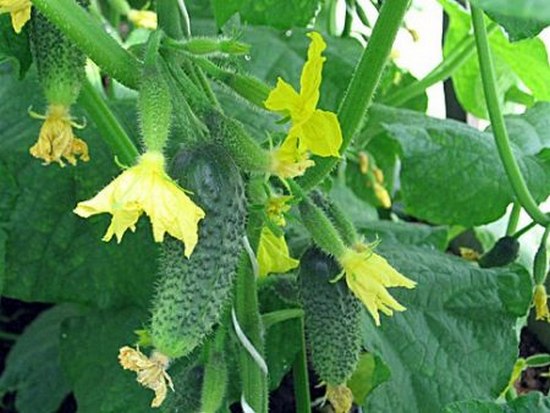
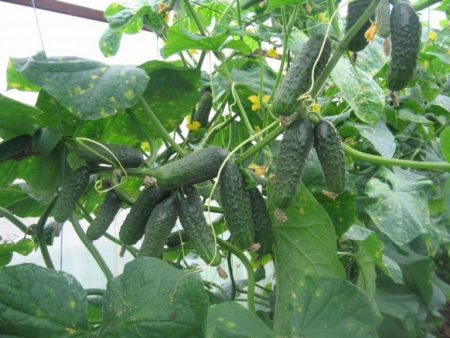
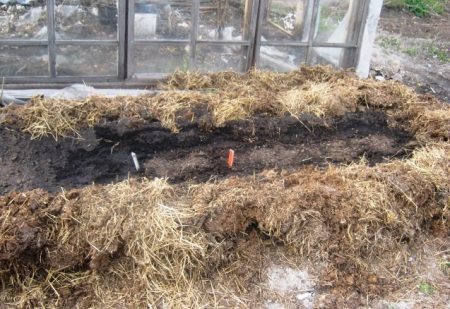
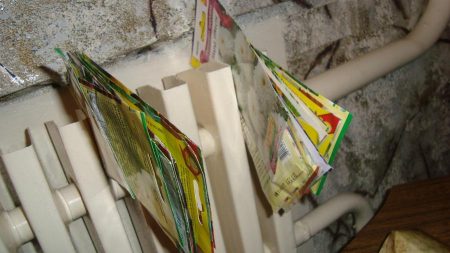
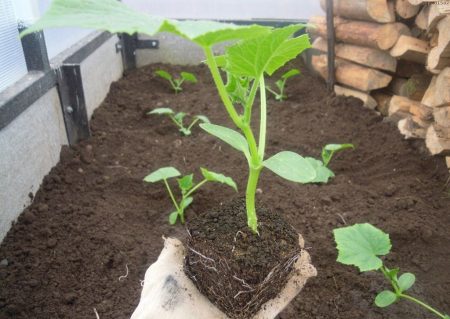
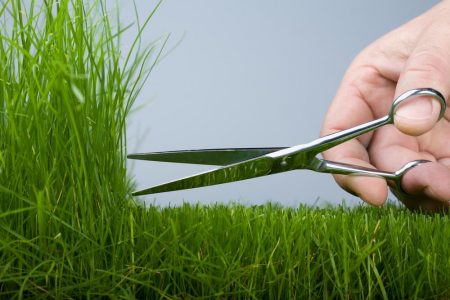

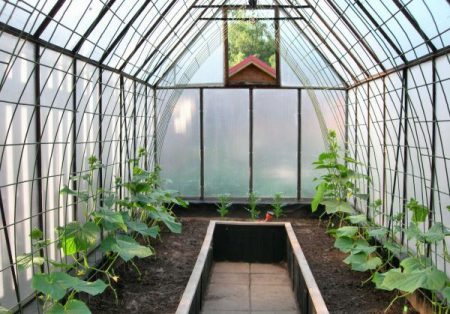
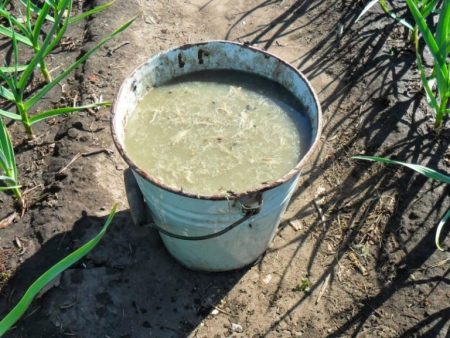
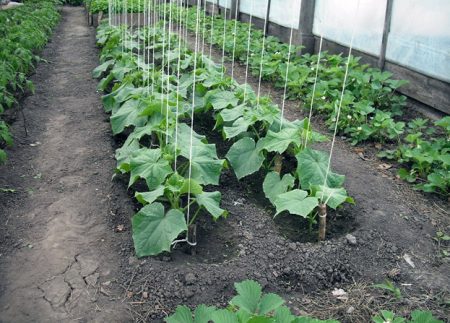
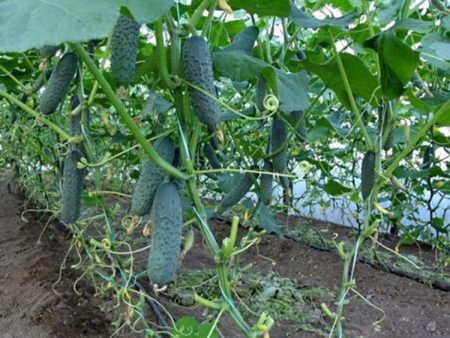

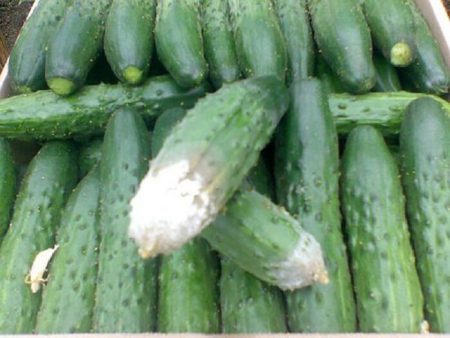
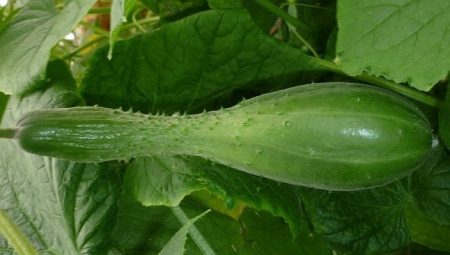

 (8 ratings, average: 4,75 out of 5)
(8 ratings, average: 4,75 out of 5) CUCUMBERS NEVER GET SICK, I'VE BEEN USING ONLY THIS FOR 40 YEARS! I SHARE A SECRET WITH YOU, CUCUMBERS ARE LIKE THE PICTURE!
CUCUMBERS NEVER GET SICK, I'VE BEEN USING ONLY THIS FOR 40 YEARS! I SHARE A SECRET WITH YOU, CUCUMBERS ARE LIKE THE PICTURE! You can dig a bucket of potatoes from each bush. Do you think these are fairy tales? Watch the video
You can dig a bucket of potatoes from each bush. Do you think these are fairy tales? Watch the video
 How our fellow gardeners work in Korea. There is a lot to learn and just fun to watch.
How our fellow gardeners work in Korea. There is a lot to learn and just fun to watch. Eye trainer. The author claims that with daily viewing, vision is restored. They don't charge money for views.
Eye trainer. The author claims that with daily viewing, vision is restored. They don't charge money for views. A 3-ingredient cake recipe in 30 minutes is better than Napoleon. Simple and very tasty.
A 3-ingredient cake recipe in 30 minutes is better than Napoleon. Simple and very tasty. Therapeutic exercises for cervical osteochondrosis. A complete set of exercises.
Therapeutic exercises for cervical osteochondrosis. A complete set of exercises. Which indoor plants match your zodiac sign?
Which indoor plants match your zodiac sign? What about them? Excursion to German dachas.
What about them? Excursion to German dachas.
Thank you. Very interesting and informative.